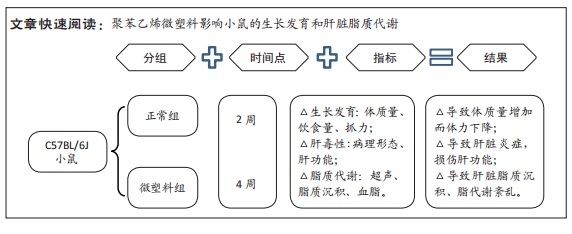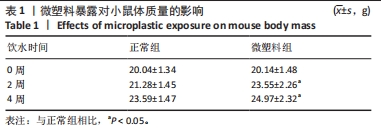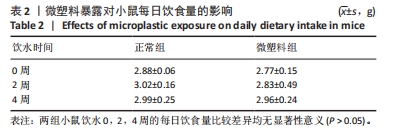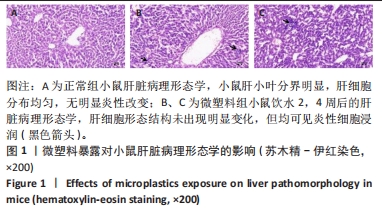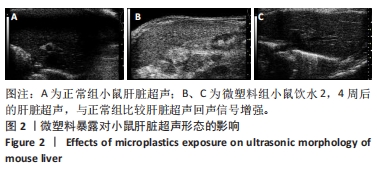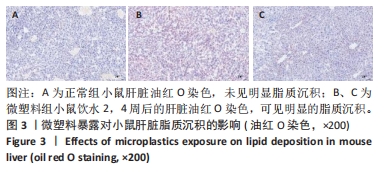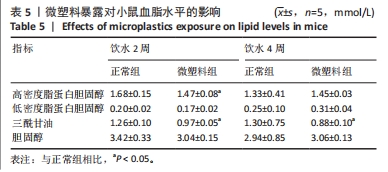[1] TURNER A, HOLMES L, THOMPSON RC, et al. Metals and marine microplastics: Adsorption from the environment versus addition during manufacture, exemplified with lead. Water Res. 2020;173:115577.
[2] THOMPSON RC, OLSEN Y, MITCHELL RP, et al. Lost at sea: where is all the plastic? Science. 2004;304(5672):838.
[3] ALIMBA CG, FAGGIO C. Microplastics in the marine environment: Current trends in environmental pollution and mechanisms of toxicological profile. Environ Toxicol Pharmacol. 2019;68:61-74.
[4] FENDALL LS, SEWELL MA. Contributing to marine pollution by washing your face:microplastics in facial cleansers. Mar Pollut Bull. 2009;58(8):1225-1228.
[5] JIN M, WANG X, REN T, et al. Microplastics contamination in food and beverages: Direct exposure to humans. J Food Sci. 2021;86(7):2816-2837.
[6] SENATHIRAJAH K, ATTWOOD S, BHAGWAT G, et al. Estimation of the mass of microplastics ingested - A pivotal first step towards human health risk assessment. J Hazard Mater. 2021;404(Pt B):124004.
[7] ZHANG Q, XU EG, LI J, et al. A Review of Microplastics in Table Salt, Drinking Water, and Air: Direct Human Exposure. Environ Sci Technol. 2020;54(7):3740-3751.
[8] COX KD, COVERNTON GA, DAVIES HL, et al. Human Consumption of Microplastics. Environ Sci Technol. 2019;53(12):7068-7074.
[9] ZHANG N, LI YB, HE HR, et al. You are what you eat: Microplastics in the feces of young men living in Beijing. Sci Total Environ. 2021;767:144345.
[10] 那军,耿译航,蒋莹,等.快递员痰液和鼻腔冲洗液中的微塑料污染分析[J].中国公共卫生,2021,37(3):451-454.
[11] RAGUSA A, NOTARSTEFANO V, SVELATO A, et al. Raman Microspectroscopy Detection and Characterisation of Microplastics in Human Breastmilk. Polymers (Basel). 2022;14(13):2700.
[12] LIU S, GUO J, LIU X, YANG R, et al. Detection of various microplastics in placentas, meconium, infant feces, breastmilk and infant formula: A pilot prospective study. Sci Total Environ. 2023;854:158699.
[13] WU D, FENG Y, WANG R, et al. Pigment microparticles and microplastics found in human thrombi based on Raman spectral evidence. J Adv Res. 2023;49:141-150.
[14] ROTCHELL JEANETTE M, JENNER LC, CHAPMAN E, et al. Detection of Microplastics in Human saphenous vein tissue using uFTIR:A pilot study. PLoS One. 2023;18(2): e0280594.
[15] RAGUSA A, SVELATO A, SANTACROCE C, et al. Plasticenta: First evidence of microplastics in human placenta. Environ Int. 2021;146:106274.
[16] DONG XS, LIU XB, HOU QL, et al. From natural environment to animal tissues:A review of microplastics (nanoplastics)translocation and hazards studies. Sci Total Environ. 2023;855:158686.
[17] 王英雪,徐熳,王立新,等.微塑料在哺乳动物的暴露途径、毒性效应和毒性机制浅述[J].环境化学,2021,40(1):41-54.
[18] GOODMAN KE, HARE JT, KHAMIS ZI, et al. Exposure of human lung cells to polystyrene microplastics significantly retards cell proliferation and triggers morphological changes. Chem Res Toxicol. 2021;34(4):1069-1081.
[19] XU M, HALIMU G, ZHANG Q, et al. Internalization and toxicity: A preliminary study of effects of nanoplastic particles on human lung epithelial cell. Sci Total Environ. 2019;694:133794.
[20] HIRT N, BODY-MALAPEL M. Immunotoxicity and intestinal effects of nano- and microplastics: a review of the literature. Part Fibre Toxicol. 2020;17(1):57.
[21] KANNAN K, VIMALKUMAR K. A Review of Human Exposure to Microplastics and Insights Into Microplastics as Obesogens. Front Endocrinol (Lausanne). 2021; 12:724989.
[22] VETHAAK AD, LEGLER J. Microplastics and human health. Science. 2021; 371(6530):672-674.
[23] LU L, WAN Z, LUO T, et al. Polystyrene Microplastics induce gut microbiota dysbiosis and hepatic lipid metabolism disorder in mice. Sci Total Environ. 2018; 631-632(6):449-458.
[24] CHEN H, HUA X, LI H, et al. Transgenerational neurotoxicity of polystyrene microplastics induced by oxidative stress in Caenorhabditis elegans. Chemosphere. 2021;272:129642.
[25] 王蕊,蒲晓晓,赵云利.微塑料毒效应研究进展[J].包头医学院学报,2023, 39(10):84-90.
[26] HERNÁNDEZ-ARENAS R, BELTRÁN-SANAHUJA A, NAVARRO-QUIRANT P, et al. The effect of sewage sludge containing microplastics on growth and fruit development of tomato plants. Environ Pollut. 2021;268(Pt B):115779.
[27] 郭冰林,丰晨晨,陈悦,等.聚苯乙烯微塑料对小白菜生长、生理生化及冠层温度特性的影响[J].环境科学,2023,44(9): 5080-5091.
[28] WANG J, LI J, LIU W, et al. Three typical microplastics affect the germination and growth of amaranth (Amaranthus mangostanus L.) seedlings. Plant Physiol Biochem. 2023;194:589-599.
[29] JIANG W, FANG J, DU M, et al. Microplastics influence physiological processes, growth and reproduction in the Manila clam, Ruditapes philippinarum. Environ Pollut. 2022;293:118502.
[30] BERTUCCI JI, BELLAS J. Combined effect of microplastics and global warming factors on early growth and development of the sea urchin (Paracentrotus lividus). Sci Total Environ. 2021;782:146888.
[31] BHATT S, FAN C, LIU M, et al. Effect of High-Density Polyethylene Microplastics on the Survival and Development of Eastern Oyster (Crassostrea virginica) Larvae. Int J Environ Res Public Health. 2023;20(12):6142.
[32] 朱琳,周燕,田坤明,等.微塑料暴露对雄性小鼠肠道菌群和生殖功能的影响[J].现代预防医学,2023,50(5):813-819.
[33] GOODMAN KE, HUA T, SANG QA. Effects of Polystyrene Microplastics on Human Kidney and Liver Cell Morphology, Cellular Proliferation, and Metabolism. ACS Omega. 2022;7(38):34136-34153.
[34] PIAO Y, LIU Y, XIE X. Change trends of organ weight background data in sprague dawley rats at different ages. J Toxicol Pathol. 2013;26(1):29-34.
[35] 康恺,杨丹,黄至诚,等.微塑料对小鼠生长和小肠结构的影响[J].农业环境科学学报,2020,39(2):256-262.
[36] 齐晓晔,雷萍,齐兆东,等.归脾汤对化疗相关性疲劳模型TNF-α分泌的调节效应[J].亚太传统医药,2019,15(1):13-15.
[37] 甘加宽,樊憬懿,王冬芝,等.睡眠剥夺诱导小鼠气虚证模型的方法研究[J].世界科学技术-中医药现代化,2016,18(10):1801-1806.
[38] 中华中医药学会《中医体重管理临床指南》专家组,广东省针灸学会肥胖专病联盟.肥胖症中医诊疗方案专家共识[J].北京中医药大学学报,2022, 45(8):786-794.
[39] ZHAO L, SHI W, HU F, et al. Prolonged oral ingestion of microplastics induced inflammation in the liver tissues of C57BL/6J mice through polarization of macrophages and increased infiltration of natural killer cells. Ecotoxicol Environ Saf. 2021;227:112882.
[40] YIN K, WANG D, ZHANG Y, et al. Polystyrene microplastics promote liver inflammation by inducing the formation of macrophages extracellular traps. J Hazard Mater. 2023;452:131236.
[41] SHEN R, YANG K, CHENG X, et al. Accumulation of polystyrene microplastics induces liver fibrosis by activating cGAS/STING pathway. Environ Pollut. 2022; 300:118986.
[42] CHENG W, LI X, ZHOU Y, et al. Polystyrene microplastics induce hepatotoxicity and disrupt lipid metabolism in the liver organoids. Sci Total Environ. 2022;806(Pt 1):150328.
[43] SHI CZ, HAN XH, GUO W, et al. Disturbedgut-liver axis indicating oral exposure to polystyrene microplastic potentially increases the risk of insulin resistance. Environ lnt. 2022;164:107273.
[44] 殷建莉.NF-κB通路在聚苯乙烯纳米塑料影响巨噬细胞脂质代谢中的作用机制[D].长春:吉林大学,2023.
|
